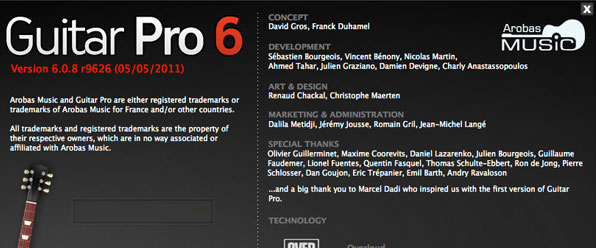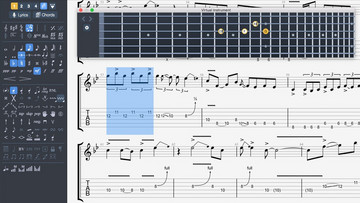
It doesn’t sound natural at all, but at least you know what is what, and you can hear every instrument played together perfectly – which is useful when you want to hear if something’s wrong.

In either case, the sound isn’t that important because that’s not how you’ll export it in the end, you’ll either record your new song with real instruments or softwares better suited for that, or play the song you learned with a live band. You see what’s the problem here? I don’t want to be spending time tinkering with the sound of the instruments in the tab I’m writing or playing along to. In GP6, there are at least two tabs entirely devoted to that!!! Moreover, if you want it to sound reasonably tolerable, you’ll have to spend a good amount of time mixing your instruments. The previous versions of RSE (“Realistic” Sound Engine), were okay because they didn’t get too much in the way, they did sound awful but at least they didn’t bother you. It’s useful both to composers who want to write new music, and to musicians who want to learn a new song. Guitar Pro, to me, is a compositional and play-along software. It sure can be enhanced, however: n-tolets crossing over bars, for example, should definitely be a feature!


It can be approximated without the n:m function, but it looks terrible, and it’s quite a pain to find out, look at that tab I made for an idea of how atrocious it looks. This is important because I’ve encountered more than a few times – but more noticeable in Blotted Science’s Cretaceous Chasm – tolets that don’t play against 4s or 2s, the example here would be a 6:7 polyrhythm.


 0 kommentar(er)
0 kommentar(er)
